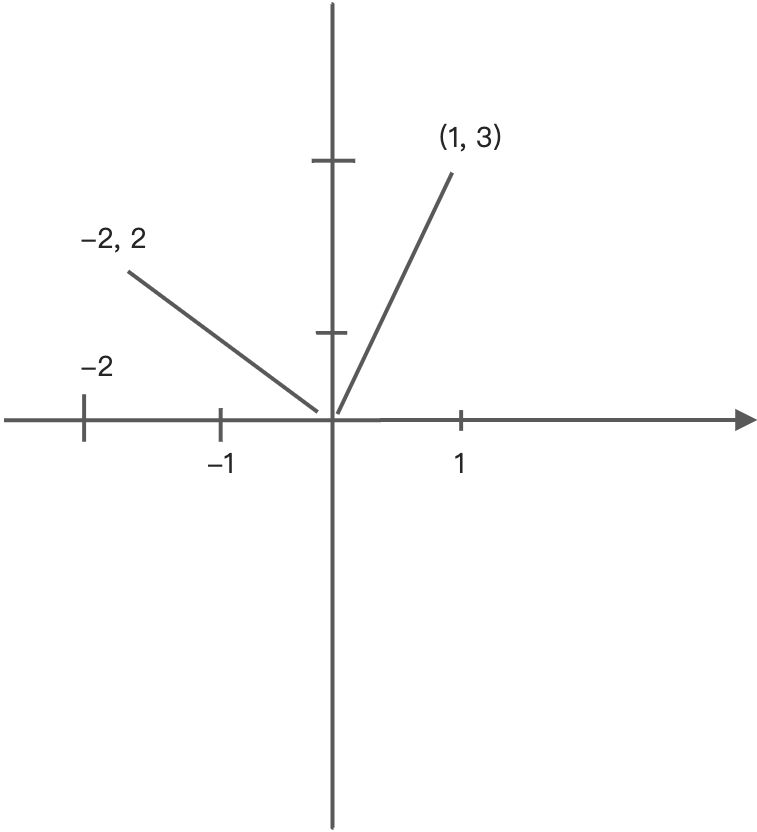题目
我们有一个由平面上的点组成的列表 points。需要从中找出 K 个距离原点 (0, 0) 最近的点。平面上两点之间的距离是欧几里德距离。
示例
(转自leetcode)输入:points = [[1,3],[-2,2]], K = 1输出:[[-2,2]]解释:(1, 3) 和原点之间的距离为 sqrt(10),(-2, 2) 和原点之间的距离为 sqrt(8),由于 sqrt(8) < sqrt(10),(-2, 2) 离原点更近。我们只需要距离原点最近的 K = 1 个点,所以答案就是 [[-2,2]]来源:力扣(LeetCode)链接:https://leetcode-cn.com/problems/k-closest-points-to-origin著作权归领扣网络所有。商业转载请联系官方授权,非商业转载请注明出处。
提示
- 初中数学中的直角斜边的公式(a平方 + b平方 = c平方)
- js内置一个API,(Math.hypot(a, b) = c).方法返回所有参数的平方和的平方根
所以

求的就是上图中的两条斜线 ```javascript 斜线 (-2, 2)到原点设为c1 斜线 (1, 3)到原点设为c2
c1 = Math.sqrt(Math.pow(-2, 2) + Math.pow(-2, 2), 2); c2 = Math.sqrt(Math.pow(1, 2) + Math.pow(3, 2), 2);
// Math.hypot来表示就是, 简便了很多 c1 = Math.hypot(-2, 2); c2 = Math.hypot(1, 3);
<a name="c7nTU"></a>### 实现- 使用大顶堆来写```javascript/*** @param {number[][]} points* @param {number} k* @return {number[][]}*/var kClosest = function(points, k) {const distanceMap = transform(points);const heap = [];distanceMap.forEach((item) => {if (heap.length < k) {push(heap, item);} else {if (heap[0].distance > item.distance) {pop(heap);push(heap, item);}}});return heap.map((item) => points[item.key]);};/*** 将计算出点于原点的距离*/function transform(points) {return points.map((point, index) => {return {key: index,distance: Math.hypot(point[0], point[1]),};});};// 大顶堆// 将距离最远的放入堆顶// 当堆内达到指定的数量后,比较堆顶于当前推入元素大小function pop(heap) {if (heap.length === 0) {return;}const first = heap[0];const last = heap.pop();if (first !== last) {heap[0] = last;siftDown(heap, last, 0);}return first;}function push(heap, node) {const len = heap.length;heap.push(node);siftUp(heap, node, len);}function compare(a, b) {return a.distance - b.distance;};function siftUp(heap,node,i,) {let index = i;while(index > 0) {const parentIndex = (index - 1) >>> 1;const parent = heap[parentIndex];if (compare(node, parent) > 0) {heap[parentIndex] = node;heap[index] = parent;index = parentIndex;} else {return;}}};function siftDown(heap,node,i,) {const length = heap.length;const halfIndex = length >>> 1;let parentIndex = i;while(parentIndex < halfIndex) {const leftIndex = (parentIndex << 1) + 1;const left = heap[leftIndex];const rightIndex = leftIndex + 1;const right = heap[rightIndex];if (compare(left, node) > 0) {if (rightIndex < length && compare(right, left) > 0) {heap[rightIndex] = node;heap[parentIndex] = right;parentIndex = rightIndex;} else {heap[leftIndex] = node;heap[parentIndex] = left;parentIndex = leftIndex;}} else if (rightIndex < length && compare(right, node) > 0) {heap[rightIndex] = node;heap[parentIndex] = right;parentIndex = rightIndex;} else {return;}}};

